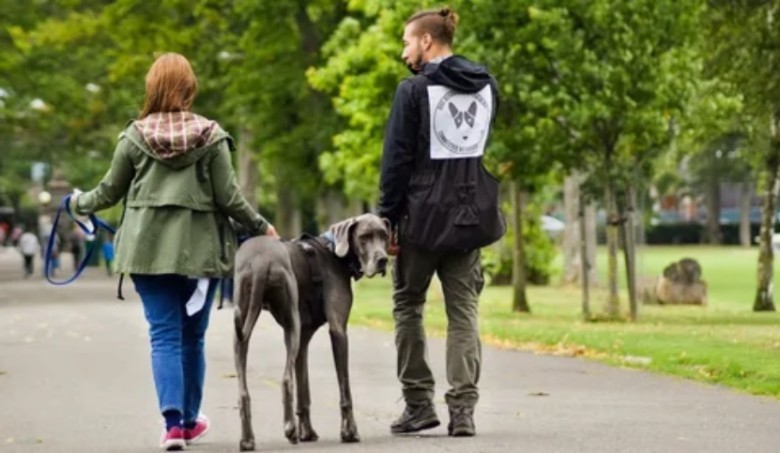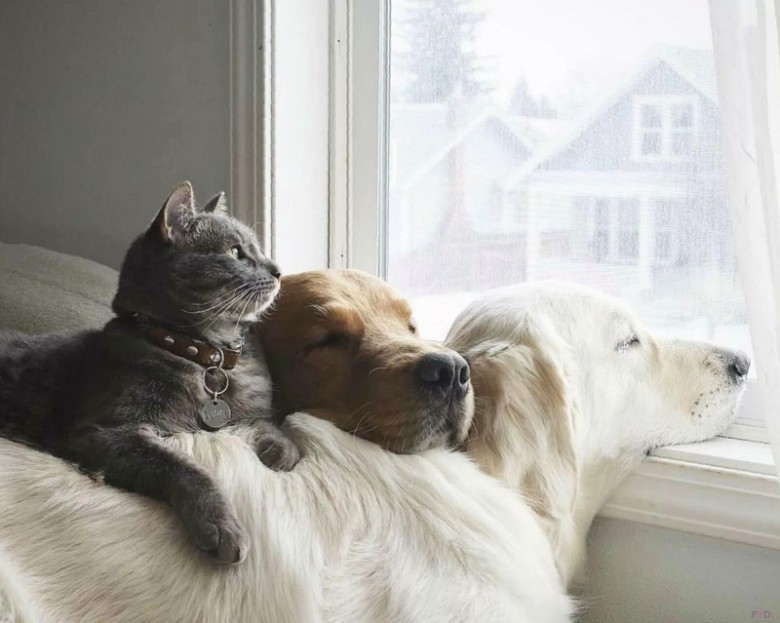
Petfluencers Reach New Heights of Popularity
The "petfluencer" trend shows no signs of slowing down, with animal social media stars amassing millions of followers. From fashion-forward cats to skateboarding dogs, these furry influencers are cashing in on sponsored content deals and even launching their own merchandise lines. One video of a pug wearing designer sunglasses has racked up over 500 million views on Instagram.

The rise of the petfluencer can be attributed to several factors. For one, people are increasingly using social media as an outlet for their love of animals. In a world that can feel increasingly disconnected, these cuddly online celebrities provide a sense of connection and joy. Scrolling through an account like Nala Cat's 4 million-plus Instagram followers can instantly brighten one's day.
Moreover, the petfluencer phenomenon taps into the growing "humanization" of pets. Owners are treating their furry friends more like family members, dressing them up in designer outfits, taking them on adventures, and chronicling their every move. This trend has blurred the lines between pets and people, with influencers like Doug the Pug and Jiffpom achieving a level of fame once reserved for human celebrities.
The financial incentives for pet owners to turn their animals into influencers are also undeniable. Top petfluencers can earn thousands, or even millions, of dollars through sponsored content, product placement, and merchandise sales. One report estimated that the 10 highest-earning pet influencers collectively made over $15 million in 2022.
For many owners, transforming their pets into social media stars started as a hobby but has evolved into a full-fledged business. "I never imagined Nala would become this big," says Varisiri Methachittiphan, owner of the famous feline influencer. "It's been an incredible journey, and we're just getting started."
The Rise of Feline Fashionistas
hile dogs have long been the darlings of social media, cats have emerged as the breakout stars of the petfluencer world. Accounts like Nala Cat, Suki Café, and Smoothie the Cat have amassed millions of followers, showcasing their feline influencers in high-end outfits, elaborate photoshoots, and even starring roles in music videos.
The appeal of these fashion-forward felines lies in their ability to capture the internet's imagination. Cats are notoriously aloof and independent, making their willingness to don accessories and strike poses all the more amusing and endearing. Varisiri Methachittiphan, Nala Cat's owner, recalls the moment she first dressed her cat in a miniature jacket: "I posted the photo, and it just blew up. People loved seeing Nala in human clothes, acting like a little person."

This anthropomorphization of cats has been a key driver of their success as influencers. By dressing them up and positioning them in relatable, human-like scenarios, pet owners are able to tap into the universal appeal of adorable animals. Suki Café's owner, Maica Maningas, explains, "People just can't resist the contrast of a cat wearing high fashion. It's so unexpected and delightful."
The rise of feline fashionistas has also spawned a lucrative industry of pet clothing and accessory brands. Companies like Kitty Couture and Meowingtons have capitalized on the petfluencer trend, offering an array of stylish options for cats – from designer collars to custom-made outfits. These brands often partner with popular influencers, further driving consumer demand.
Skateboarding Pups and Surfing Kitties
While cats may reign supreme in the petfluencer world, dogs have also carved out their own niche as social media stars. Accounts like Doug the Pug and Jiffpom have amassed millions of followers by showcasing their canine companions' impressive (and often hilarious) talents.
Doug the Pug, for instance, has become known for his ability to "skateboard" – or at least ride a small board while being gently pushed by his owner. Videos of the pug's "skateboarding" antics have racked up hundreds of millions of views, captivating audiences with his apparent mastery of the sport.
Similarly, the account of Jiffpom, a Pomeranian known for his fluffy good looks and energetic personality, has become a sensation on TikTok. Jiffpom's owner, Courtney Pickering, has leveraged her dog's fame to launch a successful merchandising line, featuring plush toys, apparel, and other Jiffpom-themed products.
But it's not just dogs who are showcasing their athletic prowess on social media. Some feline influencers have even taken up water sports, with accounts like Mango the Surfing Cat and Didga the Skateboarding Cat captivating audiences with their unique talents.
The Secret to Petfluencer Success
So, what's the secret to becoming a successful petfluencer? According to experts, it all comes down to consistent, high-quality content that resonates with the audience.
"Petfluencers who thrive are the ones who are able to tell a compelling story and connect with their followers on an emotional level," explains social media strategist Emily Chan. "It's not just about posting cute photos – it's about creating a narrative that draws people in and makes them feel invested in the pet's journey."
This narrative-driven approach is exemplified by accounts like Nala Cat, which has carefully curated a persona for its feline influencer. Nala is portrayed as a fashionable, adventure-seeking cat who loves to travel the world with her owner. This consistent branding, combined with stunning photography and engaging captions, has helped Nala amass a massive following.
Equally important is the ability to produce high-quality, visually appealing content. Petfluencers who invest in professional-grade photography, videography, and editing tend to see the greatest success. Accounts like Suki Café and Mango the Surfing Cat have become known for their cinematic, almost magazine-worthy posts, which often feature their pets in meticulously styled settings.
But it's not just about the aesthetics – petfluencers must also be savvy marketers. Successful influencers know how to effectively leverage partnerships, collaborations, and sponsored content to grow their reach and generate revenue. They also understand the importance of maintaining a strong, authentic connection with their followers, engaging with comments and responding to messages.
"The best petfluencers are the ones who seem genuinely invested in their animals and their audience," says Emily Chan. "They're not just doing it for the money – they're doing it because they love their pets and want to share that love with the world."
The Business of Being a Petfluencer
As the petfluencer phenomenon has exploded, so too has the industry that supports it. From pet clothing and accessory brands to influencer marketing agencies, there's no shortage of businesses catering to the needs of these furry social media stars.
One of the most lucrative aspects of the petfluencer industry is sponsored content. Top influencers can command thousands, or even millions, of dollars for a single sponsored post or video. Brands are eager to tap into the loyal followings of these animal celebrities, seeing them as a powerful way to reach new audiences and drive product sales.
"Petfluencers have become incredibly valuable marketing assets," explains Samantha Lee, a digital marketing expert. "Brands recognize the power of these animals to capture people's attention and spark engagement. It's a win-win for both the influencers and the brands they partner with."
But the business of being a petfluencer goes well beyond sponsored content. Many successful influencers have also launched their own merchandise lines, featuring everything from plush toys to clothing and accessories. Jiffpom, for instance, has an entire collection of Jiffpom-branded products, including a popular line of dog toys and apparel.
"Merchandise is a huge revenue stream for petfluencers," says Samantha Lee. "It allows them to capitalize on their brand and reach even more fans. Plus, it's a way for people to feel connected to their favorite animal celebrities."
In addition to sponsored content and merchandising, some petfluencers have also ventured into the world of traditional media. Accounts like Nala Cat and Doug the Pug have landed book deals, appeared in TV shows and movies, and even secured their own line of greeting cards and stationery.
"The sky's the limit for petfluencers these days," says Varisiri Methachittiphan, Nala Cat's owner. "It's all about finding creative ways to monetize your animal's fame and build a sustainable business around it."
The Downsides of Petfluencer Fame
While the rise of petfluencers has brought joy and entertainment to millions, it has also raised some concerns about the ethical treatment












Comments
0 comment